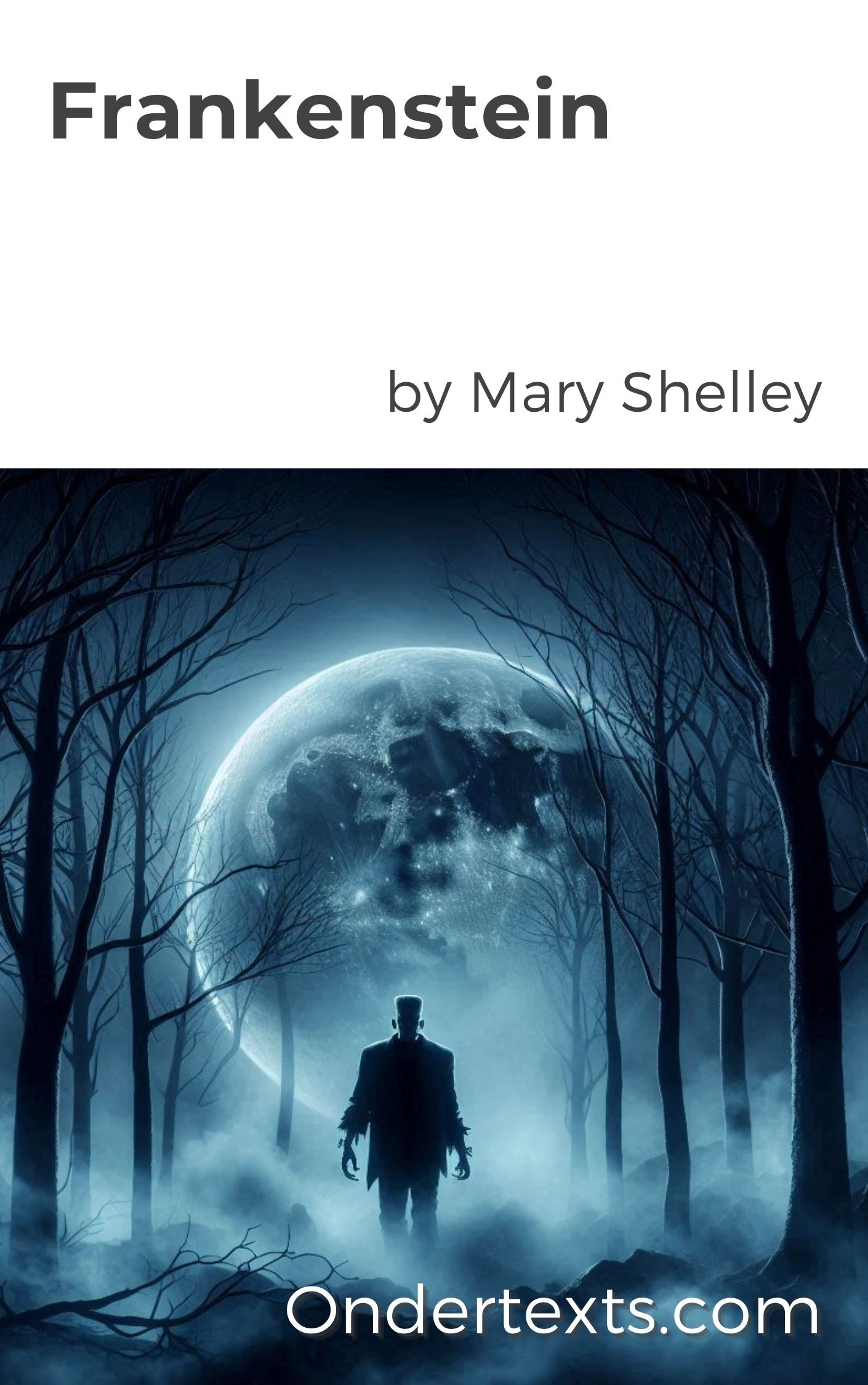Frankenstein
by Mary Shelley
 Frankenstein by Mary Shelley
Frankenstein by Mary Shelley"Frankenstein"; or, "The Modern Prometheus" is an 1818 novel written by English author Mary Shelley. The story revolves around Victor Frankenstein, a young scientist who embarks on an unorthodox scientific experiment, creating a sapient creature. Shelley began writing the tale at the age of 18, and the first edition was published anonymously in London on 1 January 1818, when she was 20. Her name appeared in the second edition, published in Paris in 1821. The novel is set in various European locations, including Geneva, Switzerland, where much of the story unfolds. It explores themes of galvanism, the occult, and the consequences of scientific hubris. "Frankenstein" is a seminal work of English literature, blending elements of the Gothic novel and the Romantic movement. Its influence extends to horror stories, films, and plays, although the name “Frankenstein” is often erroneously associated with the monster rather than its creator[1†][2†].
Summary
"Frankenstein"; or, "The Modern Prometheus", written by English author Mary Shelley, is a seminal work that intertwines elements of the Gothic novel and the Romantic movement. Set against the backdrop of Europe in the late 18th century, the novel explores themes of scientific ethics, the nature of monstrosity, and the consequences of playing god[3†].
The story unfolds through a series of letters and narratives, recounted by Captain Robert Walton, who is on a perilous mission to explore the North Pole. Walton’s ship becomes trapped in impassable ice, and it is during this time that he encounters Victor Frankenstein, a scientist weakened by the cold and haunted by a monstrous creation. Victor shares his harrowing tale with Walton, revealing the events that led to the birth of the creature[3†].
Victor Frankenstein, driven by a desire to overcome death and unlock the secrets of life, embarks on a fateful journey. His early life in Geneva is blissful, spent in the company of his cousin (in the 1818 edition) or adopted sister (in the 1831 edition), Elizabeth Lavenza, and his friend Henry Clerval. However, Victor’s insatiable curiosity leads him to study natural philosophy and chemistry at the University of Ingolstadt. There, he becomes convinced that he has discovered the secret of life and feverishly assembles a creature from old body parts. In a climactic moment, he brings his creation to life, only to be horrified by its monstrous appearance[3†].
The central conflict arises when Victor abandons his creation, fearing the consequences of his actions. The creature, rejected by society, becomes violent and murderous. Victor’s guilt compounds as he faces the deaths of loved ones—his youngest brother William, and later, Justine Moritz, who is wrongly accused of the murder. Victor’s pursuit of knowledge has unleashed a destructive force, and he grapples with the responsibility for the suffering caused by his creation[3†].
The main message of "Frankenstein" lies in the cautionary tale about scientific hubris. Victor’s relentless pursuit of knowledge and his desire to play god lead to tragic consequences. The novel serves as a warning against the unchecked ambition of humanity, urging us to consider the ethical implications of our actions. Shelley’s exploration of monstrosity extends beyond physical appearance, delving into the moral and emotional dimensions of what it means to be human[3†].
In addition to its thematic depth, "Frankenstein" addresses topics such as the boundaries of science, the role of empathy, and the impact of isolation. The creature’s loneliness and longing for companionship highlight the importance of connection and understanding. Shelley’s portrayal of the monster as both victim and perpetrator challenges simplistic notions of good and evil, emphasizing the complexity of human nature[3†].
In summary, "Frankenstein" remains a timeless work that continues to resonate with readers, inviting reflection on the consequences of our actions and the boundaries we dare to cross in the pursuit of knowledge and power[3†].
References and Citations:
- Wikipedia (English) - Frankenstein [website] - link
- ThoughtCo - 'Frankenstein' Overview [website] - link
- SparkNotes - Frankenstein Full Book Summary [website] - link
Text is available under the Creative Commons Attribution-ShareAlike License 4.0; additional terms may apply.
Ondertexts® is a registered trademark of Ondertexts Foundation, a non-profit organization.